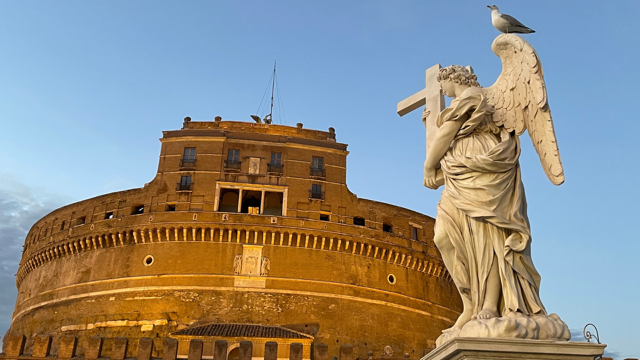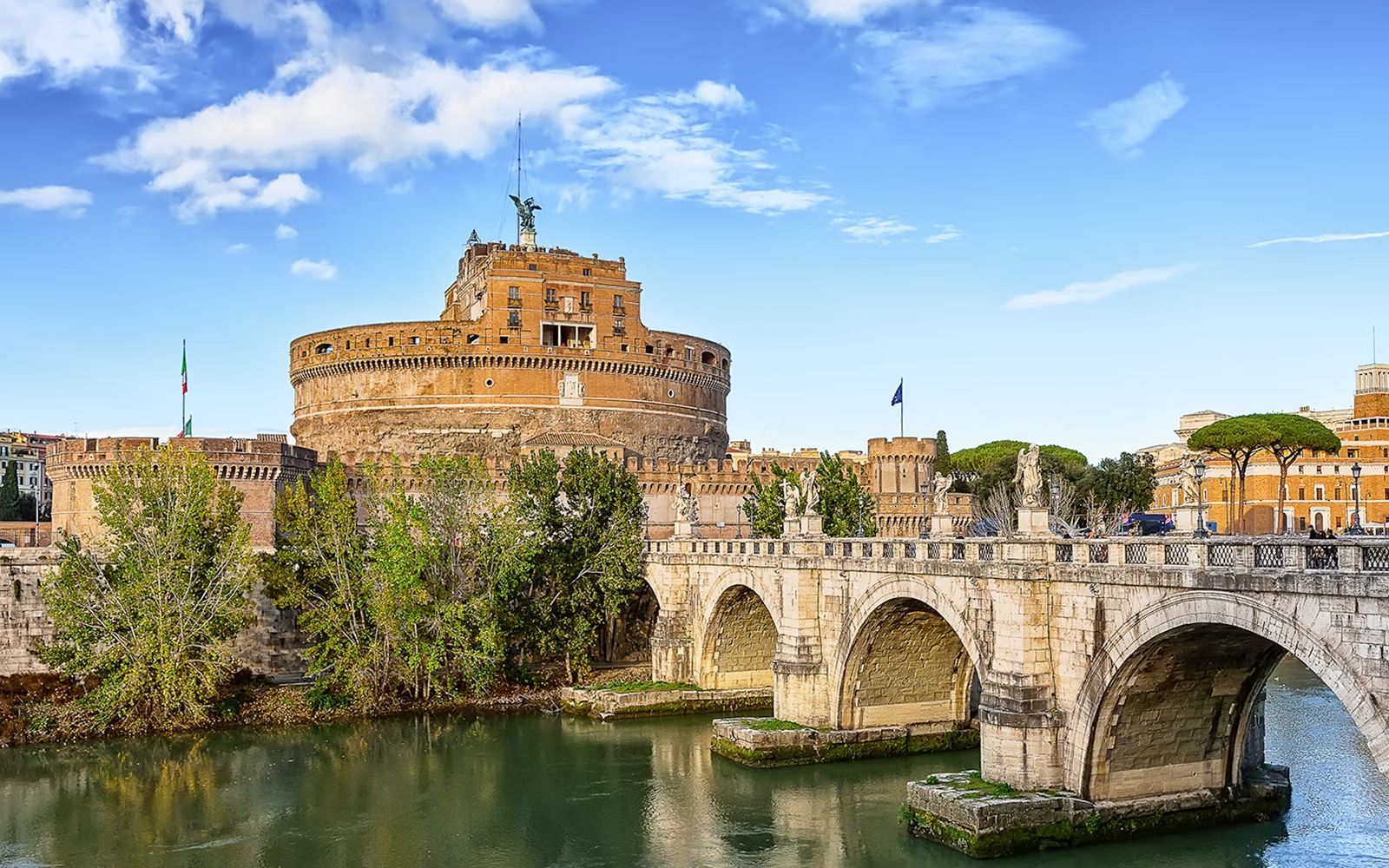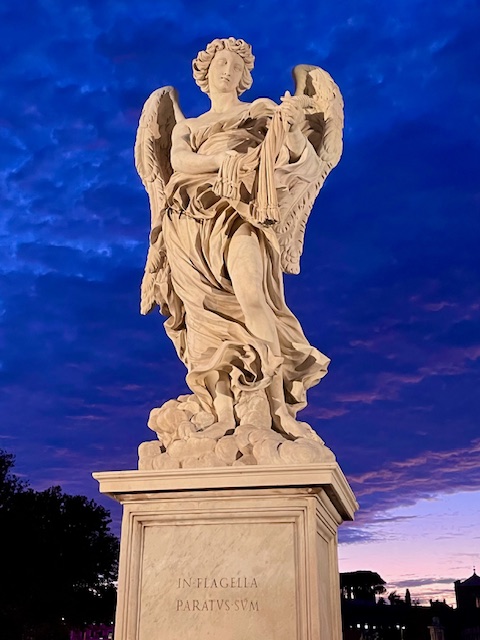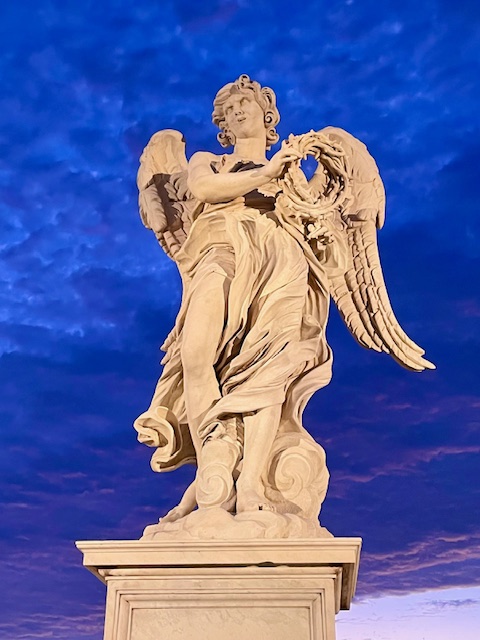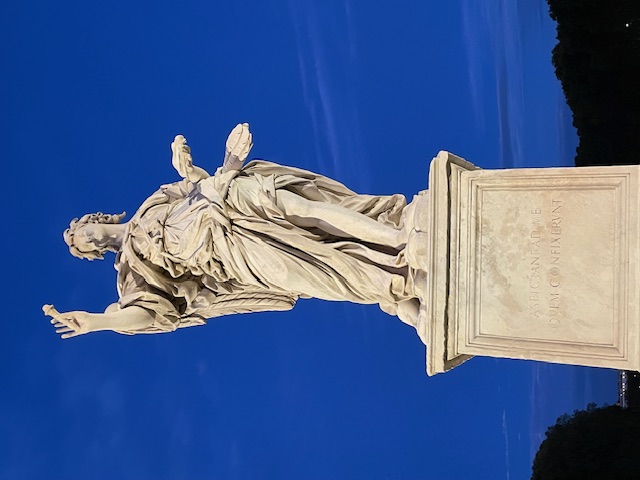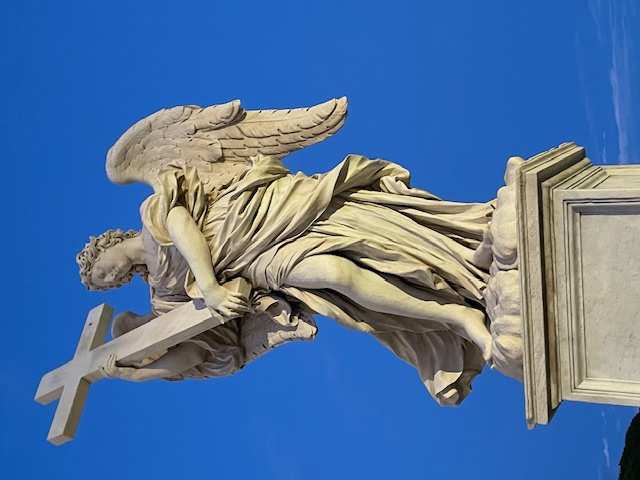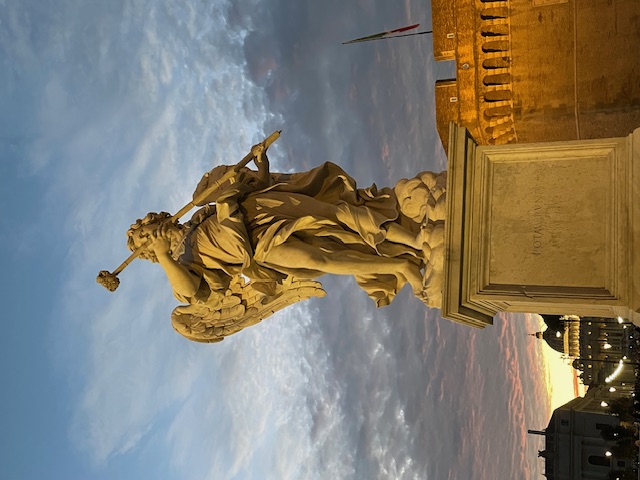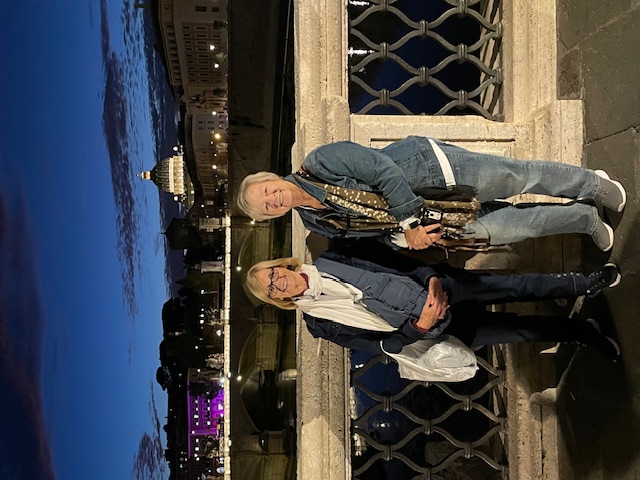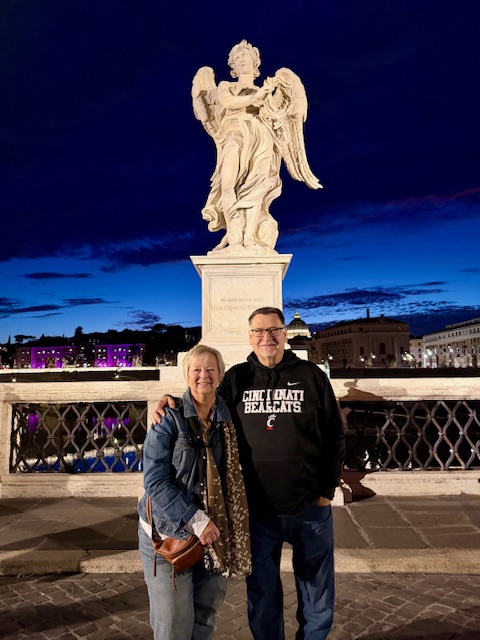by Dale Reeves
Story Pastor
Los Angeles, California, may be known as the “City of Angels,” but I beg to differ. I think the city of angels is actually in another country. This past weekend, Karen and I were able to spend several days in Rome, Italy, with some of our family members. This was our second visit to this “Eternal City.” I guess when we came here fourteen years ago, made a wish, and threw a euro over our left shoulders into the Trevi Fountain, it worked—and our second trip was just as enjoyable as the first.
After touring the Colosseum and the Forum for a second time, we walked to an iconic spot that we missed our first time around—the Ponte Sant’Angelo bridge that connects the city center to the majestic Castel, Sant’Angelo. Spanning the Tiber River in the heart of Rome, this pedestrian bridge was commissioned by Emperor Hadrian in 134 AD. Yes, that is correct—134 AD! Adorned with ten magnificent angel statues designed by Gian Lorenzo Bernini and his pupils, the bridge draws visitors for its artistic beauty and romantic views. It is one of Rome’s most photographed walkways. After Nero’s Bridge was destroyed, it became the main route to St. Peter’s Basilica, earning the nickname, “Bridge of St. Peter.”
Its current name, “Ponte Sant’Angelo,” is derived from a vision that Pope Gregory I supposedly had of the archangel Michael on the roof of Castel Sant’Angelo, signaling the end of a plague that devastated Rome. Originally adorned with statues of emperors and deities, the bridge underwent a major transformation in 1669 when Pope Clement IX commissioned Bernini to replace the old stucco angels with marble statues that line the bridge today.
A Criminal’s Death
In medieval Rome, the bridge served as a chilling site where bodies of executed criminals were displayed as warnings. So, it seems appropriate that Bernini and his students sculpted ten statues of angels (five on each side of the bridge) that are each holding a symbol of the Passion of Christ, who for our sakes died a criminal’s death on a cross, though he was completely innocent and sinless. God’s Word tells us that Jesus “humbled himself in obedience to God and died a criminal’s death on a cross” (Philippians 2:8, NLT). As you approach the entrance to the bridge, you immediately notice two other sculptures that serve as spiritual gatekeepers—the apostles Peter and Paul—each offering symbolic protection to all who would cross the bridge.
The ten angelic statues are as follows:
—An angel carrying a column that represents the pillar to which Christ was chained while being flogged for you and me. The Latin engraving reads in English, “My throne is upon a column.”
—An angel holding the whip used by the Romans to flog Jesus while he was bound to the column. The inscription on the sculpture translates in English, “I’m ready for the scourge.”
—An angel carrying the crown of thorns that was placed on the head of Jesus. The inscription reads, “The thorn is fastened upon me.”
—An angel carrying the dice and the robe when the Roman soldiers cast lots to determine who would receive Christ’s seamless robe. The engraving reads in English, “For my clothing, they cast lots.”
—An angel carrying a cloth that may have been used to wipe the sweat and blood from Jesus’ face as he carried his cross to his crucifixion. The inscription reads, “Look upon the face of your Christ.”
—An angel holding a single nail in his right hand and two more nails in his left hand. The Latin engraving reads in English, “They will look upon me whom they have pierced.”
—An angel carrying the cross that Christ was forced to carry through the streets of Jerusalem. The inscription reads, “Dominion rests on his shoulders.”
—An angel carrying the superscription, “INRI,” which stands for “Jesus of Nazareth, King of the Jews,” portraying the sign written in Hebrew, Latin, and Greek, that was nailed to the cross above Jesus’ head.
—An angel carrying a sponge, symbolizing the Roman soldier who placed a sponge with vinegar on a stick and pressed it to Jesus’ lips, when he cried out, “I am thirsty,” just before he died. The Latin inscription reads in English, “They gave me vinegar to drink.”
—An angel carrying a spear, the weapon that the Roman soldiers used to pierce Jesus’ side, confirming his death before lowering him down from the cross. The inscription reads, “You have ravished my heart.”
Angels Watching Over You
Karen and I have been blessed to travel with her two brothers, their wives, and my sister, Angie, whom my mother and father named “Angela” at birth, because she was their firstborn angel. She has certainly been an angel to me, and together with my wife Karen they have both saved me from a heap of trouble in my lifetime. It’s good to know I have some “angels watching out for me.”
How about you? Do you think much about angels? A few months ago, our lead pastor, Brad Wilson, taught on spiritual warfare. Based on what we read in the New Testament, I believe there is much spiritual warfare going on in the heavenlies that we do not see every day. The author of Hebrews asks, “Are not all angels ministering spirits sent to serve those who will inherit salvation?” (Hebrews 1:14, NIV).
Contrary to much of the art we have seen in Rome this past week, angels are not cute little naked babies holding harps. They are studly warriors. Almost every time they appear in the Bible, they immediately say to those they were sent to, “DO NOT BE AFRAID!” That is because when these heavenly warriors on a mission from God appeared, no doubt the recipients of the message were shaking in their boots. We know from Scripture that our archenemy Satan is a “fallen angel,” because he tried to usurp Almighty God’s sovereignty. But when we are walking by faith, covered by the blood of Jesus, and we have ministering angels God has sent to protect us, we have NO NEED TO FEAR!
So whether you have been fortunate to visit the real “city of angels”—as we have—or just need to be assured of God’s presence in your workplace today, in your home, or in your neighborhood, do not fear, the God of Angel Armies is for you!
“The highest angelic powers stand in awe of God. He is far more awesome than all who surround his throne. O Lord God of Heaven’s Armies! Where is there anyone as mighty as you, O Lord? You are entirely faithful” (Psalm 89:7, 8, NLT).


